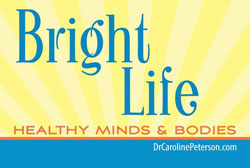23% of People Have Varicose Veins
What are Varicose Veins?
Varicose veins occur when the blood has a difficult time coming back up to the heart and stretches out the veins it is traveling in making the veins lumpy and twisted.
Because veins carry blood up, for me this means something is impeding the blood from traveling back up.
In pregnancy, it could be a baby.
At other times, it has to do with an organ or fascia or inflammation impeding venous return.
What are Risk Factors for Varicose Veins?
Risk factors for varicose veins include
- Diet
- Genetics
- Prolonged Standing
- Pregnancy
- Being Female
- Being Older
- Constipation
- Tumor
- Obesity
What are the Symptoms of Varicose Veins?
- Varicose veins are generally in lower extremities and/or pelvis
- Heaviness
- Achiness
- Itching
- Cramps
- Skin Discoloration
- Worse with standing
- Possibly worse with walking and exercise
- Leg Fatigue
- Relieved by rest and elevation
What is the Progression of Varicose Veins?
Varicose veins begin with signs of spider veins (telangiectasis) that signify the walls of veins are breaking.
The venous system can continue to lose function and ropey varicose veins will become apparent usually in the legs, vulva (between the legs), or as hemorrhoids.
As the venous system loses competence, it is unable to pull up blood adequately and lymph will leak out into the tissue causing edema.
After the edema, the skin will become discolored and eczema can develop
After the skin becomes discolored, the skin will become hard, red, and although there is swelling the lower leg will also be tapered (lipodermatosclerosis)
Next ulcers develop that can heal
Later ulcers will not be able to heal
If You Have Varicose Veins that are More Pronounced on One Side
Something is Blocking Venous Return on One Side
What is venous insufficiency?
Venous insufficiency means the veins are not able to carry the blood back to the heart the way they should.
This occurs because the little valves inside the veins are not working right and there is some back flow in the blood.
This causes blood to pool and put you at risk of deep vein thrombosis (blood clots).
What are the signs and symptoms of venous insufficiency?
Venous insufficiency presents similarly to varicose veins, but not all people with varicose veins have venous insufficiency.
- Pain, fatigue, tightness, burning in legs that worsens throughout the day
- Heaviness in legs with walking that is relieved with rest or elevating your legs
- Brown leathery skin by your ankles
- Flaky itchy skin by your ankles
- Varicose veins
Can Natural Medicine Help My Varicose Veins and Venous Insufficiency?
Natural medicine can often help varicose veins and venous insufficiency.
This is not a one and done type of thing.
Most people will need to continue taking herbs to support the venous system for life, and will have to drain their own veins periodically.
This is because the number one reason for varicose veins is genetic, so we need an epigenetic work around.
During your treatment Dr. Caroline Peterson will trace the path of the veins and discover where the blocks are that are creating slowness in the blood flow and causing the veins to stretch out and the valves not to be able to hold up the blood.
Very commonly vascular manipulation is not sufficient to treat varicosities, and we must co-treat with herbs.
I am happy to see people before any vascular surgery or after vascular surgery.
I will always try to help your body optimize function to the best of its ability.
What to Expect for My Treatment of Varicose Veins?
You will lay on the treatment table with your clothes on.
She always starts treatment there, because all the fluid needs to return to this area.
To be able to lift the blood out of the pelvis and lower extremities, the path up has to be clear.
Usually about 3-4 hours are needed to treat the chest and abdominal region before beginning work on the pelvis and legs.
Anyone with varicose veins should get pelvic floor therapy.
Venous congestion in the pelvic bowl can influence back up of veins in the legs.
Usually about 2-4 hours are needed to treat the pelvic organs through the belly before doing intrapelvic care.
Intrapelvic care involves laying on the treatment table under a sheet with your underware off.
Dr. Caroline Peterson will glove up and with your permission will insert a finger into the vagina or anus to evaluate the veins, muscles, nerves, lymph, and fascial of the pelvic bowl.
The pelvic bowl must be drained prior to working on the legs.
Once the legs are included in the care, the whole venous system of the body must be integrated since more blood is getting into the channels.
You can expect 10-20 hours of manual therapy
You will also need to take herbs and learn how to drain your own veins for maintenance.
Are My Varicose Veins too Severe for Natural Medicine?
If you have skin discoloration and other skin changes your varicose veins are advanced.
At that stage, nutritional support is imperative to attempt to regenerate the system.
At that stage, manual therapy on its own is not sufficient to make much of a change.
You will see the best results of manual therapy when you have not progressed past the stage of varicosities with edema.
Manual therapy is very effective at treating varicosities with edema when herbs are included in the care.
